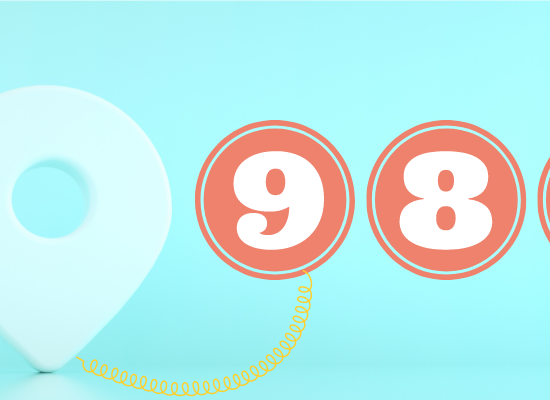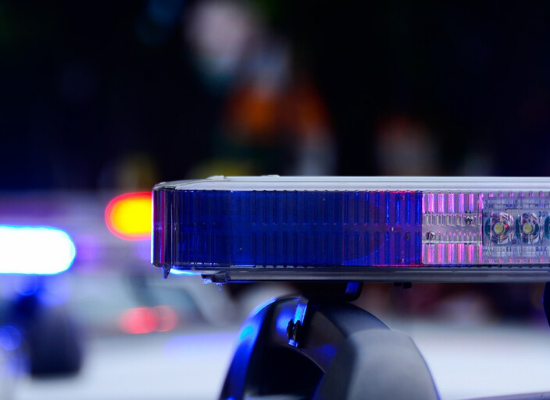
Stephanie Hepburn is a writer in New Orleans. She is the editor in chief of #CrisisTalk. You can reach her at .
Whether they wanted it or not, the Covid pandemic and corresponding physical distancing requirements thrust behavioral healthcare providers into telehealth. Some providers celebrated the sudden regulatory and policy changes that removed service delivery barriers. Others, says Kristin Neylon, senior project associate at NRI, were far more skeptical. “They were wary of telehealth and had privacy concerns,” she said. However, because of the circumstances, providers didn’t have much choice but to adopt the technology. “Many providers who’d been unsure soon discovered they liked telehealth, and the health IT allowed them to reach people they once couldn’t.”
The Covid disaster has sparked—and expanded—the use of innovative health technologies in behavioral healthcare that states can incorporate and maximize as they build out their crisis systems in anticipation of 988—the three-digit number for mental health, substance use, and suicidal crises that must be live by July 16, 2022. That’s when telecom companies must direct 988 calls to the existing SAMHSA-funded National Suicide Prevention Lifeline. Neylon explores technologies that facilitate and enhance crisis care services in a paper for the National Association of State Mental Health Program Directors, “Using Technology to Improve the Delivery of Behavioral Health Crisis Services in the U.S.”
According to Neylon, traditional first responders and mobile crisis service providers have found that telehealth creates an opportunity for diversion and rapid connection to care, especially in communities with vast geographical challenges. Kari Auclair, area director at Western Montana Mental Health Center, shares Neylon’s sentiments. She told #CrisisTalk in May that telehealth has allowed mobile crisis teams to pull in additional experts, like a psychiatrist to do a consultation. “It’s the one silver lining of the pandemic,” she said. “It catapulted us into helping people outside of a traditional office setting.”
Neylon points out that incorporating telehealth can also help decrease first responders’ transport of people in crisis to the emergency room and hospital. In the paper, she wrote about a disconnect between service providers and EMS in Charleston County, South Carolina’s largest county. On average, EMS or law enforcement were calling mobile crisis services just five times per year. When county leaders met with EMS teams, it quickly became clear why traditional first responders weren’t reaching out: mobile crisis services took too long to respond.
To improve response times and decrease EMS transport to the emergency department and hospital, Charleston Dorchester Mental Health Center, the Medical University of South Carolina, and the South Carolina Telehealth Alliance have partnered with EMS. The teams now use VidyoHealth, a telehealth software EMS put on its tablets to rapidly connect a person in crisis to mobile crisis services. “The approach,” says Neylon, “quickly matches people to care and reduces the need for mobile crisis teams to travel far distances.”
Since the program’s launch in 2017, calls from EMS to mobile crisis have increased from 5 times per year to nearly 85 per month, and the county has experienced a 58% decrease in psychiatric emergency department visits.
Telehealth restrictions swiftly loosened at the onset of the pandemic, allowing patients to use cell phones and even FaceTime to communicate with providers. However, the fast pivot to telehealth wasn’t a smooth transition for everyone. In June 2020, Chuck Ingoglia, President and CEO at the National Council for Mental Wellbeing, told #CrisisTalk that many organizations had to rapidly purchase new equipment to make telehealth implementation feasible. “They’ve had to buy tablets, phones, and computers for staff,” he said. “Some have also bought equipment or communication services for clients who didn’t have phones or needed a hotspot or more minutes to connect.” Equipment, along with high costs for elusive personal protective equipment (PPE) and reduced or halted face-to-face services, meant organizations experienced more expenses and less revenue.
That said, there were organizations with a head start because they already operated, in part or entirely, virtually or had technology in place that allowed them to stay in contact with their hardest-to-reach clients. For example, Grand Lake Mental Health Center in Northeast Oklahoma launched a program five years ago that gives “mental health machine” iPads to clients and first responders. The Certified Community Behavioral Health Clinic started the program to address spikes in inpatient psychiatric hospitalization by increasing people’s access to care in a predominantly rural state. The technology has allowed the center to stay connected with its clients during the pandemic. In fact, it has been so successful that GLMHC nearly doubled its number of mental health iPads in circulation over the past year.
Each iPad has a button that first responders, hospitals, and people in crisis can press to connect face-to-face with the CCBHC’s crisis line. “We can immediately do assessments on the iPads,” said Josh Cantwell, COO at GLMHC. Using funds provided by the CARES Act, the center has also developed a 24/7 first responder helpline, which launched in October. “First responders can press the button and debrief after a traumatic call,” said Cantwell. “Our goal is to decrease the impact of trauma on their mental health and decrease the chances of interactions that are going to put people in danger.”
Right now, the United States is amidst yet another Covid wave; this time, it’s the highly infectious Delta variant that’s impacting communities, which is more than twice as contagious as previous variants. Across the nation, states dropped Covid-related restrictions in the spring, but recently some city leaders, like New Orleans Mayor LaToya Cantrell, are reimposing restrictions, including indoor mask mandates and proof of vaccine or a negative Covid test before entering businesses like restaurants, bars, and gyms. New York and San Francisco have issued similar orders. “In many ways,” says Neylon, “it feels like we are back in March of 2020, seeing what’s going on and watching the trends.”
While we don’t know what’s to come, fear of the unknown alone can be a stressor. Dr. Robert Roca, chair of the American Psychiatric Association’s Council on Geriatric Psychiatry, shared with #CrisisTalk in January that while experts don’t yet know whether the heightened symptomology people have experienced will lead to a higher prevalence of formal syndromes, he was concerned about what would happen if Covid persisted, or even worse, resurged. “That’s going to be a real test of resilience for us all if we find ourselves more intensely locked down and having to adapt our lives yet again,” he said. Dr. Roca pointed out that when people’s confidence in the future wavers, that’s when the most dire psychiatric events happen.
In Japan, scientists have been monitoring the Covid trends, specifically the ebbs and flows of the pandemic’s impact on mental health. Shinichi Tokuno, a professor at the University of Tokyo, collaborated with colleagues and the tech company PST Inc. to develop a smartphone health app that analyzes vocal cord vibration. It’s called Mind Monitoring Systems, MIMOSYS for short. Suicide is the leading cause of death for Japanese citizens ages 15 to 29, making it dire, said Tokuno, to track how people in Japan are responding to the pandemic.
Tokuno shared with #CrisisTalk that people’s voices vary a great deal when they’re doing well, frequently going up and down. When a person experiences stress, he said, their voice becomes less “energetic.” While MIMOSYS app users opt-in, individual data isn’t released; instead, Tokuno and his colleagues are using the app to identify, more broadly, how people in Japan are doing. That said, users can track their own wellness on the app. “It allows users to catch changes or decreases in mood before they might realize them otherwise,” he said, “letting them know maybe it’s time to go for a walk or reach out to your mental health provider.”
With 988 on the horizon, and texting likely to be a component, Neylon points out that AI technologies could be instrumental in helping counselors triage texts and address potential demand challenges. In the paper, she wrote about Crisis Text Line, a nonprofit mental health texting service that uses a robust AI algorithm to prioritize texts. The algorithm rapidly reviews incoming texts, allowing counselors to address communications by severity, not chronology. As a result, the text line is able to serve 94% of high-risk texters in under five minutes. The algorithm has provided transparency on what words and emojis are more likely to lead to high-risk conversations than the word “suicide.” Among them are the emoji pill and the crying face emoji. Similarly, the AI gives counselors a window into what words are most helpful. For instance, words like “proud,” “smart,” and “brave” often pepper highly rated conversations.
Neylon says that while integrating innovative technologies for first responders, crisis service providers, and consumers is essential, so too is ensuring that social media and other marketing technologies are used to sufficiently disperse information on 988 within fields that have a tight nexus with behavioral health crises, including the behavioral health field. “This summer, I’ve spoken to providers across the nation, and many have never heard of 988,” she says. “They don’t know what 988 is, nor how it will operate.” She notes the same is true for many, if not most, consumers.
“When providers and consumers don’t know about 988, that means they can’t come to the table,” she says. “That harms the system as a whole, and it’s, yet again, a missed opportunity for parity.”
Read the full “Using Technology to Improve the Delivery of Behavioral Health Crisis Services in the U.S.” report.









